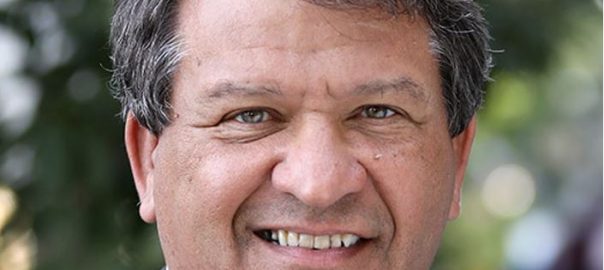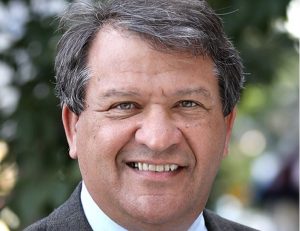
A Team Approach To Meeting the COVID-19 Challenge in Westchester County

An Excerpt of Chapter 19 of Our Darkest Hours: New York County Leadership and the COVID Pandemic
COVID-19 is our test, our call to do what needs to be done.
By March 19, we had eight hundred positive cases, 20 percent of the total in New York State. The rate of the spread was stunning.
“Lately, I’ve been remembering the way my parents described their experiences during the Great Depression and World War II. When they were telling me these stories, I was a teenager and not interested in hearing tales of yesteryear. Now, I think back to what my parents told me—the sacrifices they made, how leaders at that time were forced to come up with answers that weren’t clearly presented to them—and I believe that COVID-19 is our test, our call to do what needs to be done.
In a recent State of the County message, I asked: “Are we fierce? Do we have the mindset that will not let us buckle under an obstacle?”
I believe we do. The cartoon picture of Westchester—a suburban county where our nearly one million residents are extremely wealthy—is a misrepresentation. We are a diverse county with people from different cultural backgrounds and parts of the world. Some are new to the community; others have lived here all their lives. And they are distributed across the economic spectrum, with 8.4 percent living in poverty.
Our first case of COVID-19 was in New Rochelle at the end of February 2020. An individual who had attended a bar mitzvah and a funeral wound up in the hospital and tested positive for the virus. Prior to his diagnosis, he had infected a number of other people in his congregation. Our department of health went to work, doing the contact tracing and the field testing. When we learned the extent of the infections, I met with Governor Andrew Cuomo, Benjamin Boykin, chairman of the Westchester County Board of Legislators, and a host of healthcare and Jewish leaders.
That led the governor to create a zone within this one area of New Rochelle where there was a concentration of potential exposures. There were three schools within the New Rochelle School District, three schools in the Tuckahoe School District, and a number of houses of worship. Back then, all we had was the in-home testing. We maxed at about one hundred tests a day. In fairly short order, it was clear that our folks were being pushed beyond their ability, and at one point the state stepped in to administer the tests.
Soon enough, we had a queue of almost three thousand people who needed to be tested. These were people who felt sick, stayed home, and called their doctor. Or maybe they went to see the doctor, properly protected, and the doctor instructed them to get a COVID test. We also had firefighters, police, and EMS personnel who had responded to calls and dealt with people who had been infected. This happened with three of our police officers who administered Narcan to a woman. Coming out of her overdose, she said, “You know, I may have COVID.”
Understandably, we were inundated with requests for a mobile testing site. One was set up in a parking lot of a county park in Glen Island, and a couple of days later another was set up by the state in partnership with Northwell Health. By March 19, we had eight hundred positive cases, 20 percent of the total in New York State. The rate of the spread was stunning. It didn’t mean that everyone became seriously ill, but we had to figure out how to isolate thousands of people.
In an earlier incarnation, I was a marketing executive, and if I knew one thing to be true, it was the importance of communication. As county executive I’d been using Facebook Live multiple times a week. You could see all of my press conferences there, so even before COVID-19 hit us, I had a strong social-media presence.
When the pandemic started, we did a news conference right away. From then on, it became a daily occurrence. Even when the governor began his briefings, I still appeared in front of the media every day. I did this because I was convinced that it was the best way to give residents a local view, while reassuring them that we were doing everything we could think of, and then doing something in addition to that.
We had Michael Orth, our director of mental health, come on to talk about the different strategies for staying calm and looking after your emotional well-being. And because the schools were closed, I did a video talking to the schoolchildren of the county, and read them a book.
While the county had regular conference calls with all of our municipal governments and school superintendents, I personally stayed in touch with each of our forty-five different city councils, village boards, and town boards. Some of the meetings took place over Zoom, others were in the chamber where everyone socially distanced and wore masks. Long ago, I discovered, nothing helps people more in a difficult situation than being listened to.
I also scheduled group calls with hospital administrators, representatives from our local nonprofits, the county government unions’ group and union leaders. I’m not saying that what we’re doing is earthshaking or anything that no one’s done before. Even so, it should be done if you want to keep everyone pulling in the same direction to beat back the pandemic.
…
At the time of this writing—mid-January 2021—the vaccine has arrived, and we can see the beginning of the end. Of course, we still have a way to go, and the nearly eighteen hundred residents we lost during this cruel pandemic are never far from our thoughts.
Again, I think back to my parents’ stories of the Great Depression and World War II, and I am convinced, with all of my heart, that we held up our end of the American bargain—to do the best we could to fight this virus and take care of our community.”
The New York State County Executives’ Association, in collaboration with NYSAC, presents stories of county leadership during the COVID-19 pandemic, told by the County Executives who were on the ground leading the local response.
Our Darkest Hours: New York County Leadership & the COVID Pandemic, uses riveting first-person accounts to provide a glimpse into the fear, struggle, triumph, and pain that local leaders faced as they worked to protect their residents from an invisible and insidious enemy.
The book also provides a public policy account of the fractured federal and state response to COVID-19 and explores the economic impact of New York on Pause, the unprecedented expansion of state executive powers, and the diminution of local home rule. The Appendices include material relating to congressional actions, the state’s executive orders, and COVID cases/deaths by county from March 15, 2020 to March 15, 2021.
Our Darkest Hours: New York County Leadership and the COVID Pandemic is available for purchase from Archway Publishing and Amazon for $19.99 (softcover) and $37.95 (hardcover) and $4.99 (Kindle). All proceeds from the book will be donated to Feeding New York State, which supports the ten regional food banks that have been feeding the hardest hit New Yorkers.
